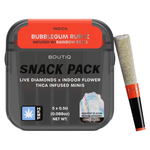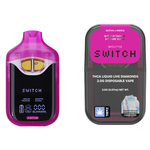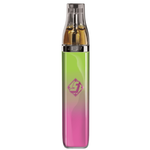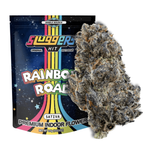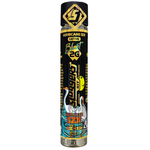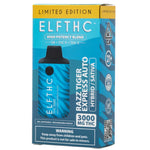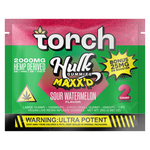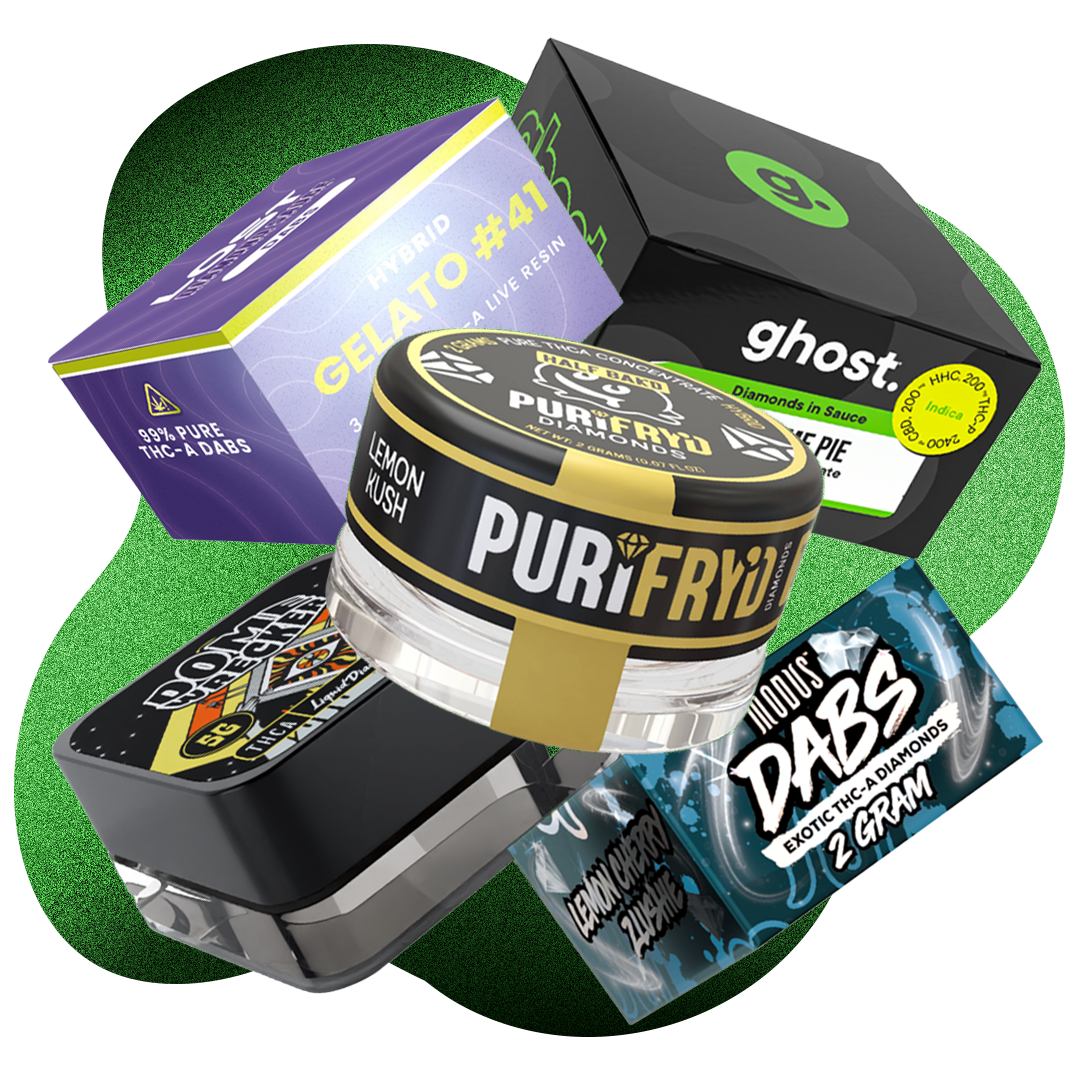Have you been using Delta 8 and suddenly found yourself facing a drug test? This is a common concern for many Delta 8 users. As Delta 8 continues to grow in popularity as a legal alternative to Delta 9, questions about its impact on drug tests are becoming more frequent. Will this cannabinoid show up in a urine test?
In this blog, we’ll break down what Delta 8 is, explore its history, effects, as well as the various ways people consume Delta 8—through vaping, edibles, or tinctures. Each method of consumption can affect how long Delta 8 stays in your system and its detectability in tests.
But the main question is—does Delta 8 show up in urine tests? We’ll get into how drug tests work, especially those designed to detect THC, and whether Delta 8 is likely to trigger a positive result. Keep reading if you’re worried about a drug test or just curious about Delta 8. This guide will help you understand how it interacts with drug testing and what you need to know before your next test.
*The detection periods for Delta 8 in urine can vary widely among individuals and are greatly influenced by several factors.
Some of these factors include;
What is Delta 8? History, Effects, & Forms of Consumption!
Delta 8, what we call it, has several names, including Δ8-THC, delta-8-THC, delta-8-tetrahydrocannabinol, and (−)-trans-Δ8-tetrahydrocannabinol. As known, Delta 8 is a psychoactive compound found in the Cannabis plant, similar to Delta 9, which is usually just referred to as THC. Delta 8 was first partially synthesized in 1941, and its effects were studied in human volunteers in 1942. The total chemical synthesis was achieved by 1965. Research on Delta 8 has evolved over the years, but it became more prominent in the market following the 2018 Farm Bill in the U.S. Going into its chemical formula, molar mass or density won't interest you, so let's cut to the chase. Delta 8 is generally synthesized from CBD extracted from hemp because the natural quantities of Delta 8 in the plant are very low. This process involves partial chemical synthesis, and the final product may contain other cannabinoids and unknown by-products. Delta 8 is an isomer of Delta 9, meaning it has the same chemical formula but a slightly different structure, specifically in the placement of one double bond, which causes it to have somewhat different effects. This difference contributes to Delta 8's increased stability, longer shelf life, and oxidation resistance. Delta 8 is psychoactive, which means it affects the brain, similar to Delta 9. It binds to cannabinoid receptors in the brain, particularly CB1 and CB2 receptors, leading to euphoria, relaxation, and altered perception. When ingested, delta-8-THC is metabolized by liver enzymes into different compounds, eventually excreted in the urine. However, studies on animals like dogs, monkeys, and rats have shown Delta 8 is moderately less potent than Delta 9. This means you need more Delta 8 to achieve the same effects as a smaller dose of Delta 9.Forms of Consumption
With that, let’s also get into—how the method of consumption affects the duration of Delta 8 in your system. The type of drug test (urine, blood, saliva, hair) also determines the detection window, with urine tests being the most common and hair tests having the longest detection period.| Method | How? | Duration in System |
| Vaping | Delta 8 can be vaporized using vape pens or other vaping devices. Vaping allows for quick absorption into the bloodstream through the lungs, providing rapid effects. | Delta 8 from inhalation methods tends to leave the system faster compared to other methods. The initial effects may last for 2 to 4 hours, but the compound and its metabolites can remain detectable for several days. |
| Smoking | Delta 8 can be smoked in the form of dried flower or concentrate. Like vaping, smoking delivers the compound directly to the bloodstream via the lungs, resulting in a fast-acting effect. | |
| Gummies and Candies | Delta 8 is commonly available in the form of gummies, chocolates, and other edible products. Edibles provide a slower onset because they must pass through the digestive system and be metabolized by the liver. | Because Delta 8 is metabolized by the liver into a more potent compound (11-hydroxy-THC), the effects are longer-lasting. The duration in the system is also prolonged, with metabolites staying in the body longer. |
| Baked Goods | Cookies, brownies, and other baked goods infused with delta 8 are popular options. These provide a longer-lasting effect due to the slower release of THC in the body. | |
| Capsules and Pills | Delta 8 capsules and pills are ingested orally and work similarly to edibles, with the effects taking longer to onset due to digestion and liver metabolism. | |
| Tinctures and Oils | Delta 8 tinctures and oils are consumed sublingually (under the tongue), where they are absorbed directly into the bloodstream. | Sublingual consumption has a similar duration in the system to inhalation, with the effects lasting around 2 to 4 hours. The detectable duration in the body is also comparable to that of inhalation, though slight variations may occur depending on the dose and individual metabolism. |
| Topicals | Delta 8 infused creams, balms, and lotions can be applied directly to the skin. Topicals are primarily used for localized relief of pain, inflammation, or skin conditions, and they do not produce psychoactive effects. | Because it does not significantly enter the bloodstream, Delta 8 applied topically does not remain in the system like other methods. |
| Dabs and Concentrates | Delta 8 concentrates, such as wax, shatter, or crumble, are highly potent forms that can be vaporized or dabbed using a dab rig or other specialized equipment. | Due to the high potency, dabbing can introduce a significant amount of Delta 8 into the bloodstream, extending its duration in the system. |
Does Delta 8 Show Up in Urine Tests?
The short answer is YES. Delta 8 can show up on a urine test. Since urine tests are the most common drug testing method, we'll focus on how different consumption methods affect its detection in urine. Urine tests are widely used in employment screenings and other contexts because they are cost-effective, easy to administer, and have a relatively long detection window. However, the chemical similarity between Delta 8 and Delta 9 makes it difficult for urinalysis to differentiate between them. Urine tests typically look for THC metabolites (like THC-COOH), which are the byproducts of THC that remain in the body even after the effects have worn off. Both Delta 8 and Delta 9 can produce similar metabolites. Because of this, consuming Delta 8 can lead to a positive drug test result for THC. If you consume Delta 8, the test might detect it as Delta 9, resulting in a failed urine test. This could happen even if Delta 8 is legal in your state because most tests do not differentiate between the two types of THC. Delta 8 can also interfere with tests designed to detect Delta 9, leading to a false negative for Delta 9. This interference happens because Delta 8 might compete with Delta 9 for detection in the test, confusing the results.| Method | Detection Period |
| Inhalation (Vaping and Smoking) | For occasional users — 1-3 days. For frequent users — 7-10 days or longer due to body fat. |
| Oral Consumption (Edibles, and Capsules) | For occasional users — 3-7 days. For frequent users — 14 days or more. |
| Sublingual Consumption (Tinctures and Oils) | For occasional users — 2-5 days. For frequent users — 7-12 days. |
| Topical Application (Lotions, and Balms) | Not detectable in Urine. |
| Dabs and Concentrates (Wax, and Shatter) | For occasional users — 3-5 days. For frequent or heavy users — 10 days to even a few weeks. |
- Regular users may have detectable levels for longer than occasional users.
- Individual metabolic rates can affect how quickly Delta 8 and its metabolites are processed and excreted.
- THC compounds accumulate in fat cells, so individuals with higher body fat percentages might retain detectable levels longer.
- Levels of hydration and the types of food consumed can impact urine concentration and excretion rates.
- Liver and kidney function, which metabolize and excrete substances, affect detection times.


